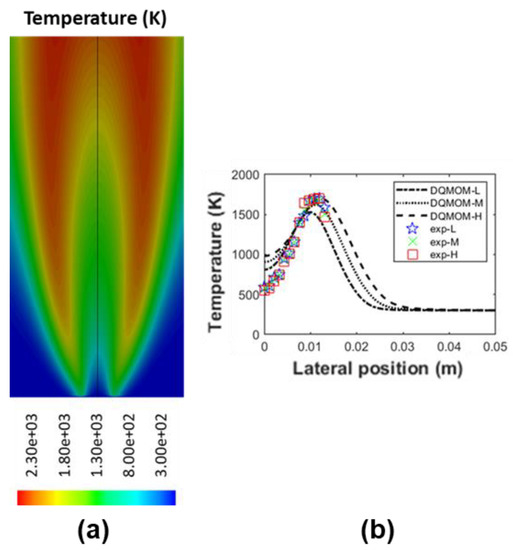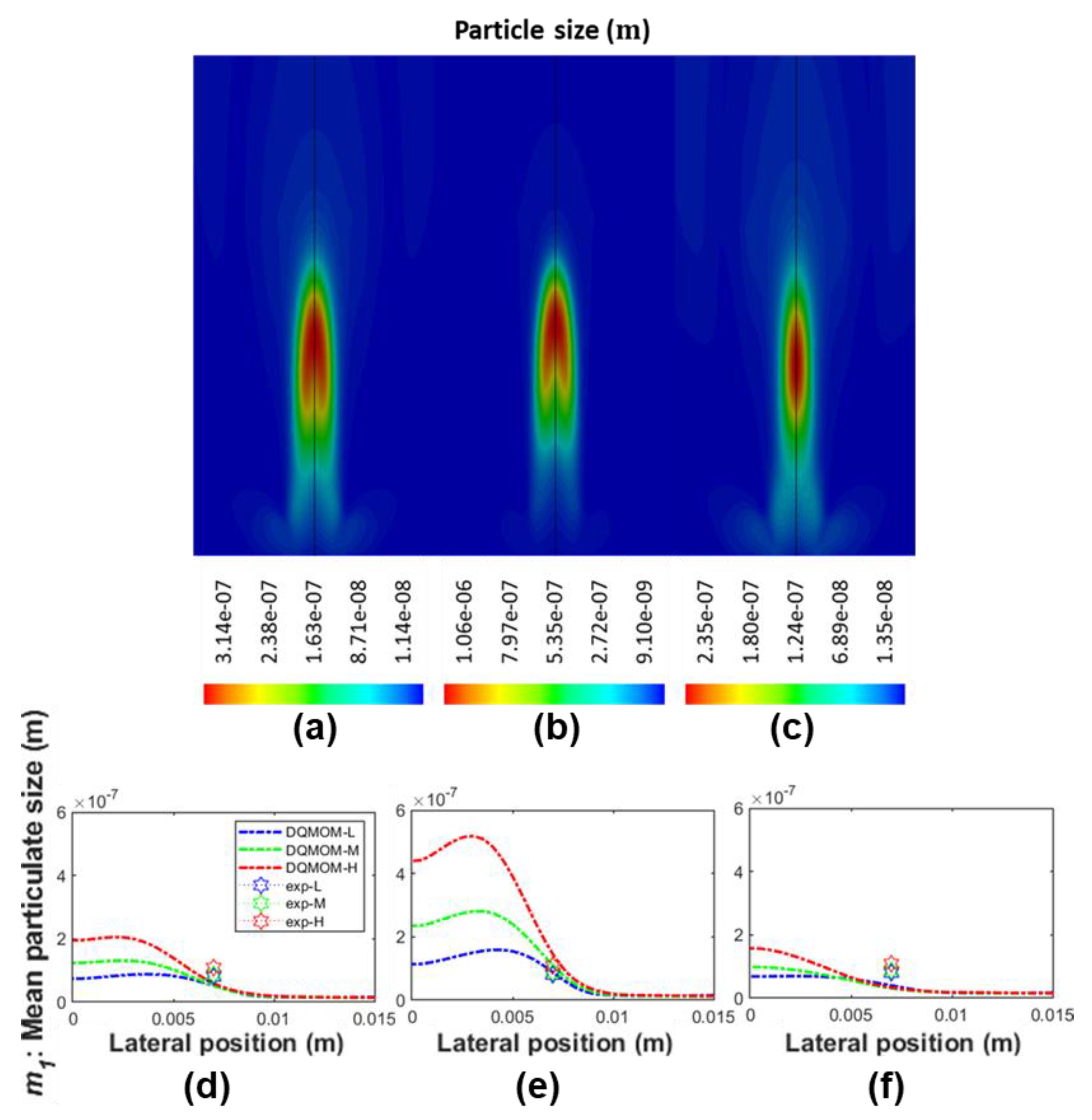We have recently developed our own predictive model to understand soot particle size distribution adopting the Discrete Quadrature Method of Moments (DQMOM) Population Balance Approach (PBA). Using this technique, we can simulate the variation of size and number of particulates for any given time and space in enclosure field. This model incorporates interactive fire phenomena, including combustion, radiation, turbulent mixing, and all key chemical and physical formation and destruction processes, such as particle inception, surface growth, oxidation, and aggregation. Through parametric study, an optimised set of values of reaction rates and soot quantities (i.e. nucleation, oxidation, fractal dimension, Schmidt number) are found to best comparing with the result of our self-constructed in-house ethylene-air flame. This work will formulate a strong foundation for future studies involving the characterisation of soot particle cluster size result from burning of combustible polymers, thus allowing more in-depth understanding of the harmfulness in terms of asphyxiant soot particulate productions.


More details can be find in the following link:
Also visit our page on ResearchGate to follow our updates:
